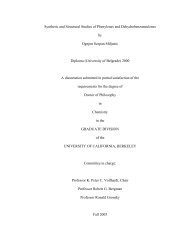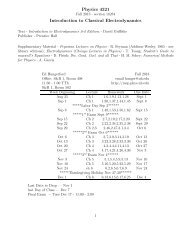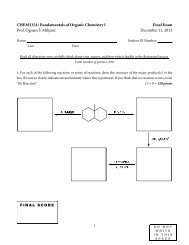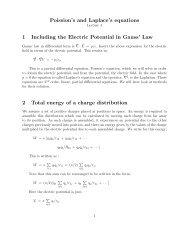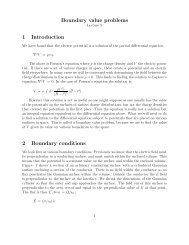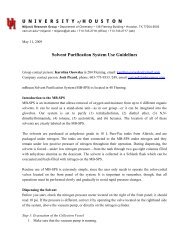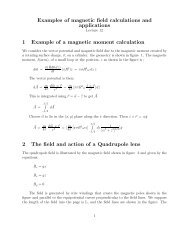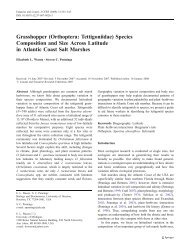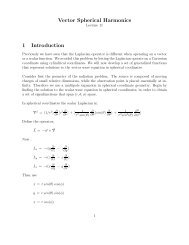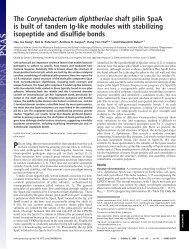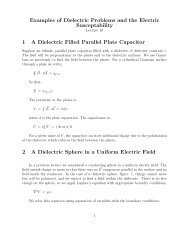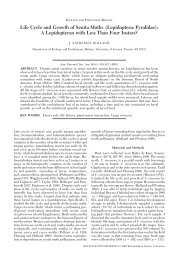Scattering 1 Classical scattering of a charged particle (Rutherford ...
Scattering 1 Classical scattering of a charged particle (Rutherford ...
Scattering 1 Classical scattering of a charged particle (Rutherford ...
Create successful ePaper yourself
Turn your PDF publications into a flip-book with our unique Google optimized e-Paper software.
dσ ⊥dΩ = k4 η 62 |ǫ − 1ǫ + 2 |2The total differential cross section is;dσdΩ = dσ ‖dΩ + dσ ⊥dΩThe total cross section is obtained by integration over dΩ.σ T = 8πk4 η 63| ǫ − 1ǫ + 2 |2The polarization <strong>of</strong> the scattered wave is;P(θ) = dσ ⊥/dΩ − dσ ‖ /dΩdσ ⊥ /dΩ + dσ ‖ /dΩ =sin2 (θ)1 + cos 2 (θ)5 Form factorSuppose the scatterers are a system <strong>of</strong> charges with fixed locations in space. The resultis a superposition <strong>of</strong> <strong>scattering</strong> amplitudes from all the point <strong>scattering</strong> centers. We havepreviously seen that coherence must be included when one adds the contributions from each<strong>scattering</strong> point. Assume that the positions <strong>of</strong> the scatters are located by the vectors, ⃗x j .The incident wave will have the phase factor, e ik 0ˆn 0·⃗x j, and the phase for the scattered waveat large distances will be e ikˆn·⃗x j. Here ˆn 0 is the direction <strong>of</strong> the scattered wave. We assumedipole <strong>scattering</strong> and write;dσdΩ =k4(4πǫ) 2 | ∑ j[â · ⃗p j + (1/c)(ˆn × â) · ⃗m j ] e i⃗q·⃗x j| 2In the above write ⃗q = kˆn 0 − kˆn = k(ˆn 0 − ˆn) for elastic <strong>scattering</strong> from massive points,(ie no recoil). Then suppose that the scatterers are identical so that ⃗p j = ⃗p and ⃗m j = ⃗m.Rewrite the above as;where;dσdΩ = [dσ sdΩ ] F(q)dσ sdΩ =F(q) = | ∑ jk4(4πǫ) 2 [â · ⃗p j + (1/c)(ˆn × â) · ⃗m j ] 2e i⃗q·⃗x j| 2 = ∑ jne i⃗q·(⃗x j−⃗x n)7




